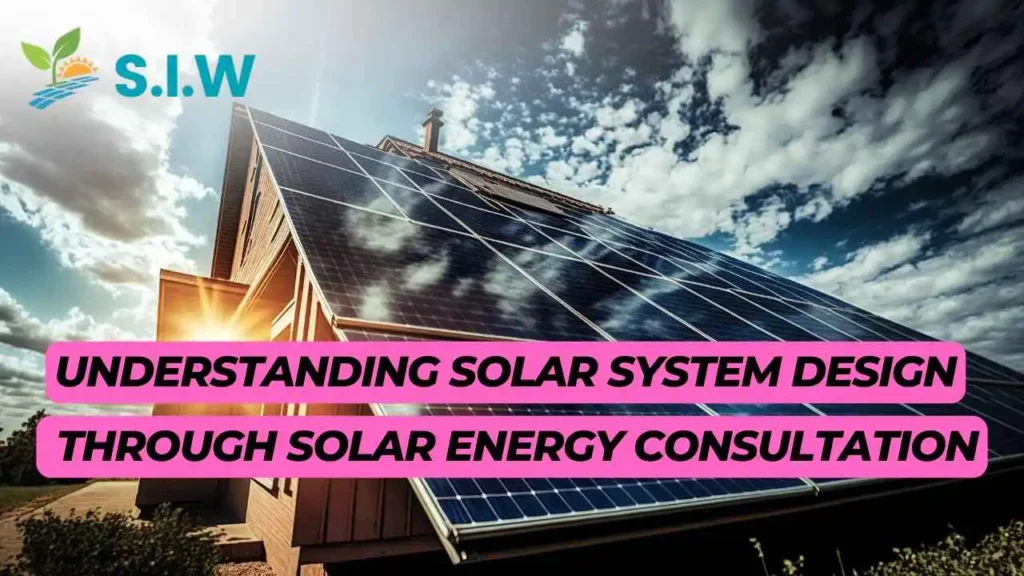In today’s world, where sustainability and energy efficiency are paramount, understanding solar system design is essential for both residential and commercial properties. At Solar Industry Watch, we are committed to providing unparalleled insights and services through our comprehensive solar energy consultations. This article delves deeply into the intricacies of solar system design, offering a detailed guide to help you grasp how solar energy consultations can optimize your solar installation.
The Importance of Solar Energy Consultation
A solar energy consultation is a crucial first step in the journey towards solar adoption. This process involves assessing your property’s specific needs, energy consumption patterns, and potential for solar energy generation. Through a detailed consultation, experts can tailor a solar system that maximizes efficiency and return on investment. Understanding the nuances of this process will ensure that you make informed decisions and achieve optimal performance from your solar energy system.
Key Components of Solar System Design
1. Solar Panel Selection
The core of any solar energy system is its solar panels. Choosing the right type and brand of panels is essential for maximizing energy output and efficiency. Panels are generally categorized into three types: monocrystalline, polycrystalline, and thin-film. Each type has its advantages and disadvantages:
- Monocrystalline Panels: Known for their high efficiency and sleek appearance, these panels are made from a single silicon crystal. They are ideal for areas with limited space.
- Polycrystalline Panels: Slightly less efficient than monocrystalline panels, these are made from multiple silicon crystals. They are more affordable and suitable for larger installations.
- Thin-Film Panels: These panels are lightweight and flexible, but they generally offer lower efficiency. They are often used in specialized applications or large-scale installations.
2. Inverter Selection
The inverter is a critical component of the solar energy system, converting the direct current (DC) generated by solar panels into alternating current (AC) that can be used by home appliances or fed into the grid. There are several types of inverters to choose from:
- String Inverters: The most common type, ideal for straightforward installations with minimal shading.
- Microinverters: These are installed on each panel, providing greater flexibility and efficiency, especially in installations with shading issues.
- Power Optimizers: These devices work in conjunction with string inverters to enhance performance by mitigating the impact of shading and other inefficiencies.
3. Mounting Systems
Mounting systems are essential for securing solar panels to rooftops or other structures. They come in various configurations:
- Roof-Mount Systems: These are attached directly to the roof and are suitable for most residential and commercial applications.
- Ground-Mount Systems: Ideal for properties with ample land, these systems are mounted on poles or racks installed on the ground.
- Pole-Mount Systems: These allow for adjustable angles and are often used in large-scale solar farms.
4. Battery Storage
Battery storage systems are becoming increasingly popular as they allow for energy to be stored and used during non-sunny periods. Key considerations include:
- Battery Capacity: Measured in kilowatt-hours (kWh), this determines how much energy can be stored.
- Battery Life: The lifespan of a battery affects its overall value and performance.
- Charge/Discharge Rates: These rates impact how quickly energy can be stored and used.
The Solar System Design Process
1. Site Assessment
The first step in the solar system design process is a site assessment. This involves evaluating the physical and environmental characteristics of the property to determine its solar potential. Factors such as roof orientation, tilt, shading, and available space are assessed to ensure optimal panel placement and performance.
2. Energy Analysis
An energy analysis is conducted to understand the property’s energy consumption patterns. This analysis helps in sizing the solar system correctly to meet the energy needs of the property. It involves reviewing utility bills, identifying peak usage times, and estimating future energy needs.
3. System Design
Based on the site assessment and energy analysis, a detailed system design is created. This design includes the selection of solar panels, inverters, mounting systems, and battery storage solutions. It also outlines the system’s layout and wiring diagrams, ensuring that all components are properly integrated.
4. Permitting and Approval
Before installation can begin, the permitting and approval process must be completed. This involves submitting the system design to local authorities and utility companies for review and approval. It ensures that the installation meets all regulatory and safety standards.
5. Installation
Once approvals are in place, the installation process begins. This involves mounting the solar panels, installing the inverters and battery storage, and connecting the system to the electrical grid. Professional installation ensures that the system operates efficiently and safely.
6. Monitoring and Maintenance
After installation, monitoring and maintenance are essential for ensuring long-term performance. Solar energy systems are equipped with monitoring tools that track performance and detect any issues. Regular maintenance checks help in keeping the system in optimal condition.
The Benefits of Professional Solar Energy Consultation
Engaging in a professional solar energy consultation offers several advantages:
- Tailored Solutions: Professionals provide customized solutions based on your specific needs and property characteristics.
- Expertise: Solar consultants bring in-depth knowledge and experience, ensuring that all aspects of the system are optimized.
- Cost Efficiency: Proper system design and installation can lead to significant cost savings and improved return on investment.
- Regulatory Compliance: Consultants ensure that all regulatory requirements are met, avoiding potential legal and financial issues.
Conclusion
Understanding solar system design through a comprehensive solar energy consultation is crucial for maximizing the benefits of solar energy. By carefully considering the components, design process, and professional consultation, you can ensure a successful solar installation that meets your energy needs and contributes to a sustainable future.








